A man dies for the fate of the world, is mourned by his followers, and is laid to rest. He carried the weight of truth and justice on his shoulders, and with him gone, the world seems to be a much darker place. But soon after, when two women visit his tomb, they find it empty. His body is gone. The tomb is empty. Sound familiar? It should; it’s the events of The Death of Superman and Funeral for a Friend.
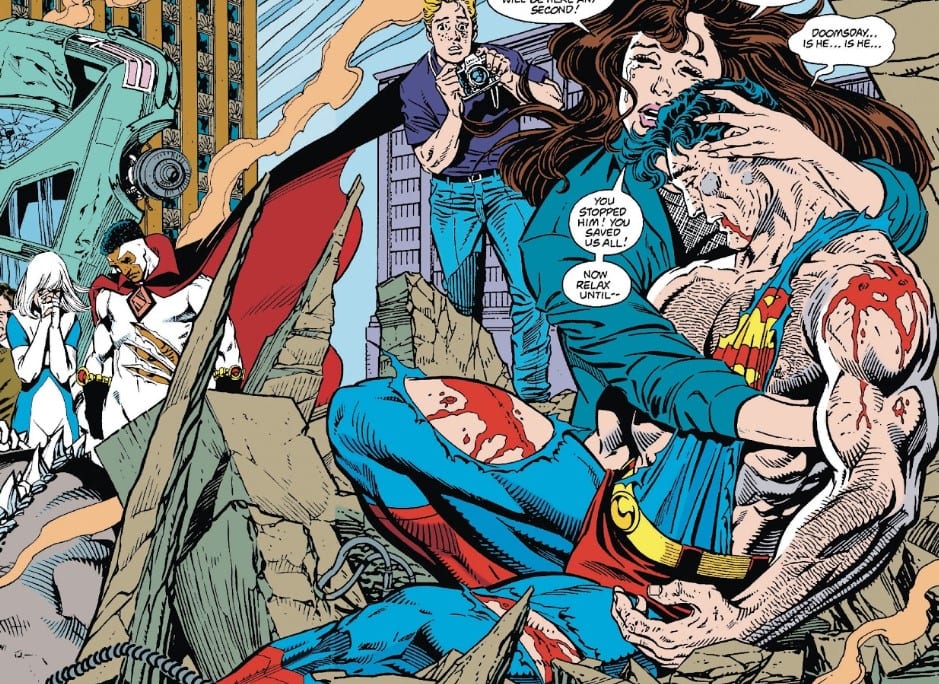
When Superman “died” in 1993, a story covered over multiple titles, the comparisons to him and Jesus Christ were pretty hard to miss. The writers of each series were, in a way, telling their own version of the Gospel. Superman was their Jesus. The comparisons were thought-provoking, for sure, though occasionally a little clumsy. The writers would throw a reimagined pieta (an image of Mary holding Jesus’ dead body) in every once in a while to remind readers that there were Biblical influences at play. Biblical references and imagery fill every page. Yet, in the Death and Return of Superman arc, this “Superman = Jesus” schtick found its footing when it seemed to go a little off-book.
MFR ON YOUTUBE (latest video)
Help us reach 5K Subs!
Reign of the Supermen vs. The Gospels
In Reign of the Supermen, we are met with a Metropolis that is very unsure of itself. Superman’s body has gone missing, and worse yet, four new Supermen have shown up. Each of them seems to claim they are Superman back from the dead. They each embody an aspect of Superman’s life and who he was. The Last Son of Krypton, one of the four Supermen, is firmly connected to Kal El’s home planet. Another, Cyborg Superman, is deeply entwined with the government of the country Superman loved. Superboy, though he prefers the moniker SuperMAN, reminds us of the flesh and blood behind the cape. And finally, the Man of Steel fights for his neighborhood and seeks to serve and make up for his past mistakes. In some ways, these are parts of Superman, but not the whole man. An incomplete picture.
That’s all fine and dandy, but what’s it have to do with Jesus? To those familiar with the gospels, you’ll know that after Jesus died, four Jesuses didn’t pop up out of the blue. However, four authors did tell Jesus’ story. In the gospels of Matthew, Mark, Luke, and John. And just like each Superman shows a part of who people expect Superman to be, the gospels show us a different side to Jesus, and some of the expectations the people had for who the Messiah ought to be.
Gospel of Matthew / Cyborg Superman: King
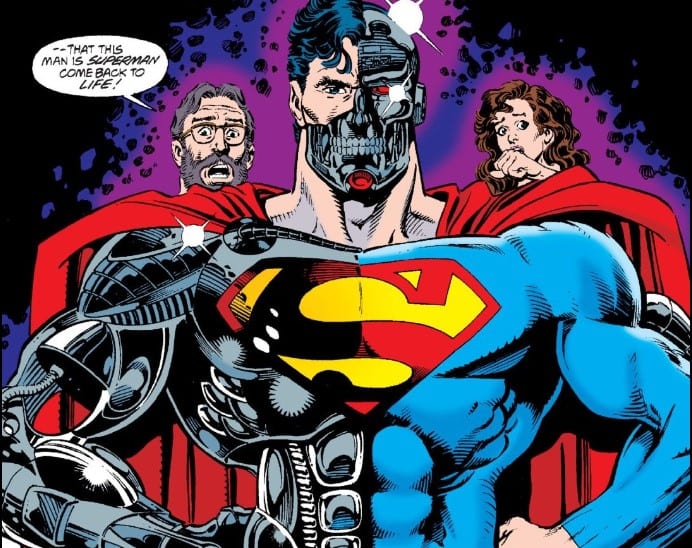
The Gospel of Matthew was written to the Jewish people. The author wrote it right after the Romans had destroyed Jerusalem. It dealt with the concept of Jesus as a kind of king. The Jewish people were expecting someone to come in and overthrow the oppressive Roman regime. Jesus didn’t overthrow the Romans (see: destruction of Jerusalem by the Romans, long after Jesus’ death). But Jesus wasn’t a king in the traditional sense. Matthew’s Jesus rejected traditional leadership roles and chose to be a leader and king by serving and loving the disenfranchised.
Enter Cyborg Superman. Cyborg Superman is perhaps the character with the most promise, the most riding on his shoulders. Scientists even scan Cyborg Superman and confirm that he’s Superman, back from the dead. This kind of “confirmation” doesn’t happen for any of the other characters. But he embodies a controversial side of Superman’s personality.
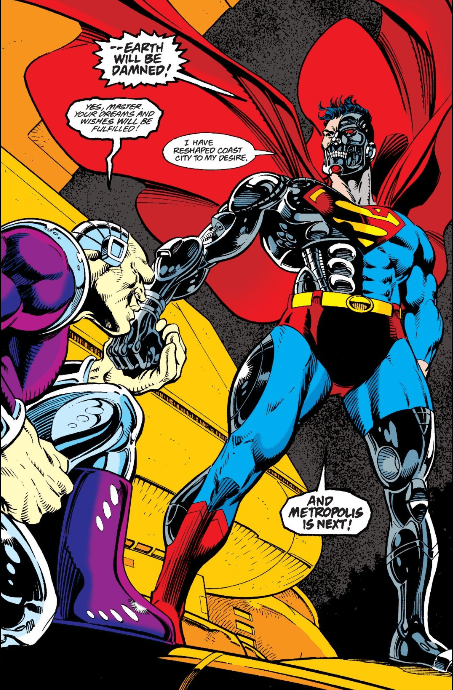
Cyborg Superman is the government’s lackey. Or at least, he wants them to think that. He gives the president a two-way radio so they can always be in contact. He isn’t here to overthrow any government (well he is, but that comes later) he is here to weasel his way into government. Ultimately, it’s because he wants to be king of the world. He is a bastardized version of both Superman and Jesus. Cyborg Superman represents not only selling out but an insatiable desire for power and authority, which ultimately leads to both his destruction and the destruction of Coast City. He flies in the face of Matthew’s Jesus by embracing traditional leadership forms and seeking to be the one person who answers to no one. In a way, he reminds us of who Matthew’s Jesus was by being the twisted opposite, just as he’s Superman’s twisted opposite.
Gospel of Mark / Man of Steel: Servant

The Gospel of Mark was written to a community of Gentile Christians that was undergoing persecution. It was a message to a downtrodden people group that was at the bottom of the totem pole. Romans were killing them for entertainment. Their lives meant nothing to the society where they lived. It was a message to remind them that the underdogs are the ones who win in the Kingdom of Heaven. While they may suffer, it is for a greater cause. And in Heaven, it’s the servants who are the true leaders.
And so, enter the Man of Steel. John Henry Irons, the Man of Steel, is a black man from a rough neighborhood in Metropolis. Metropolis at large seems undisturbed by the plight of Steel’s neighborhood. They are at the bottom of the totem pole, and the city treats their lives like they don’t matter. Right as the Man of Steel is first introduced, we see a young black boy gunned down in the streets. It just happens, with no clear reason for why. Steel, with the weight of his community on his shoulders, seeks retribution for this boy’s death and wants to eradicate the dangerous weapons that made the killing possible. He wants to serve his neighborhood, keep it safe.
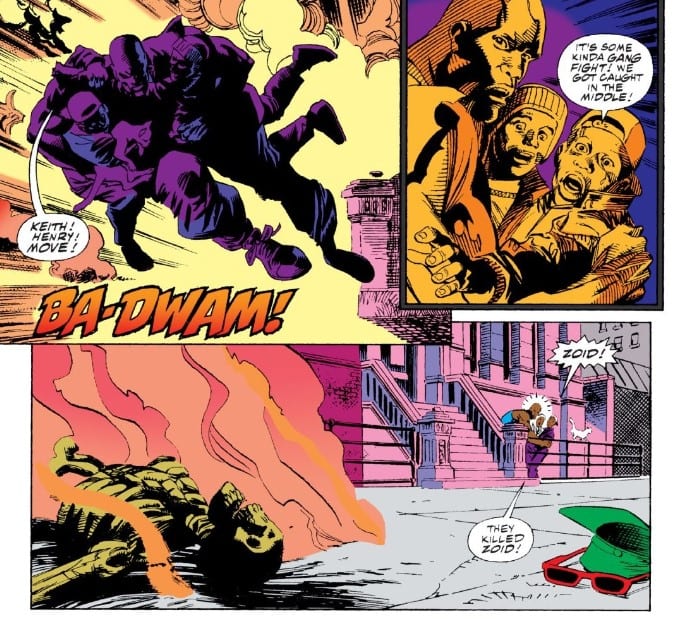
Steel is the one who invented the weapons that are killing his neighbors; we later find out. Toastmasters, big otherworldly guns that fry their victims, were his brainchild. It’s interesting then, dealing with Irons as a character. He’s both the savior of his people and the author of their persecution. Surely the Gentile population was dealing with a similar dilemma. They loved Jesus, he was their savior, but it’s for that very love that they were being persecuted and killed.
The Gospel of Luke / Superboy: Man
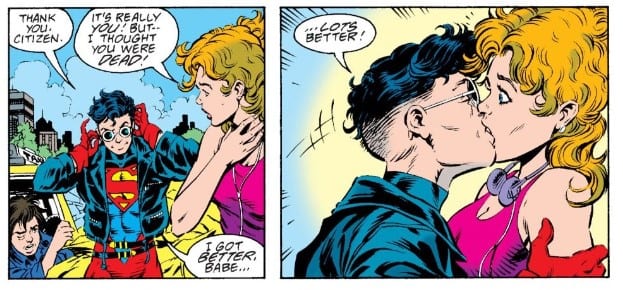
The part of Jesus we find in the Gospel of Luke is a very human part. Luke is the only one to go into much detail about Jesus’ birth and moments as a child. Luke’s purpose was to remind readers Jesus was a man. Jesus had flesh and blood. Jesus slept, ate, and wept. And he was deeply concerned with the natural world, not just focused on the heavenly one.
“Heavenly minded” isn’t the first thing to come to mind when talking about Superboy. In fact, most of the jokes in this series are about how incredibly human he is. He’s always either thinking about food or sex. Even when he’s out there trying to save the world, he’s thinking about where he can grab a bite to eat. Ironically, Superboy is always insisting on being called SuperMAN, because he’s the one who is the closest to seeming like a real man.
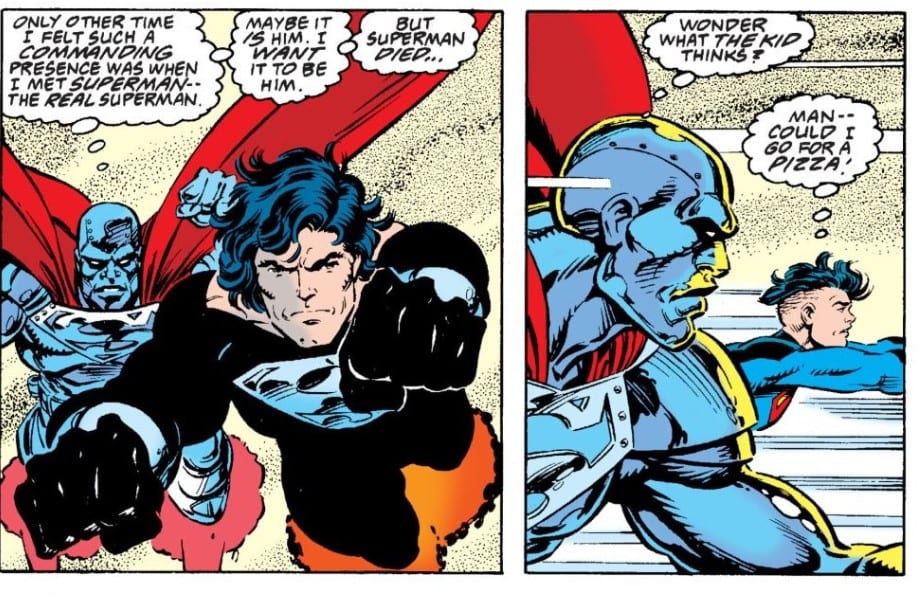
Superboy lets his libido and stomach make a lot of his decisions for him. He becomes a hero over time, but it’s a process. Yet, it’s pretty hard not to kind of like him. He’s the underdog. People wonder if any of the other three are really Superman, but they know he’s just Superman’s little clone. But his humanity connects him to the people he protects. Luke’s Jesus connected deeply with humanity. He even invited himself to dinner at Zacchaeus’ house. It’s over meals that we see Luke’s Jesus connect with the people around him, and it’s through food that we’re constantly reminded how mortal Superboy is.
The Gospel of John / Last Son of Krypton: God
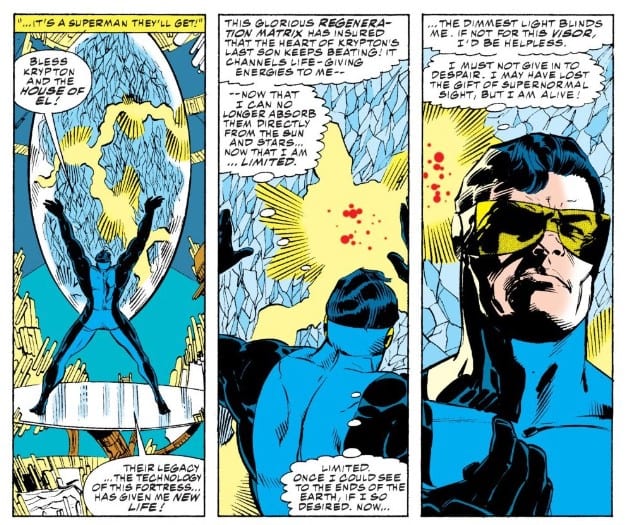
The Gospel of John is actually more controversial than you’d probably think. Some scholars have even gone so far as to call it the “anti-semitic” Gospel. Hitler himself claimed to be a fan of John’s Gospel, making his own heavily-altered version of it into anti-Jewish propaganda. John claimed in his Gospel that the Jewish people hadn’t recognized their savior, and instead killed him. And so, through their inability to recognize God among them, Jesus opened the door to all people groups to be saved.
The Last Son of Krypton certainly never said anything anti-semitic, but he does have an intense focus on the Kryptonian way. He seems to believe Kryptonians are the superior race. One wonders if, given the power, he would remake the world in Krypton’s image. It’s something worth wondering since he turns out to be the “Eradicator,” a machine created by a rogue bunch of Kryptonians to preserve the Kryptonian way and turn any planet it finds into the new Krypton.
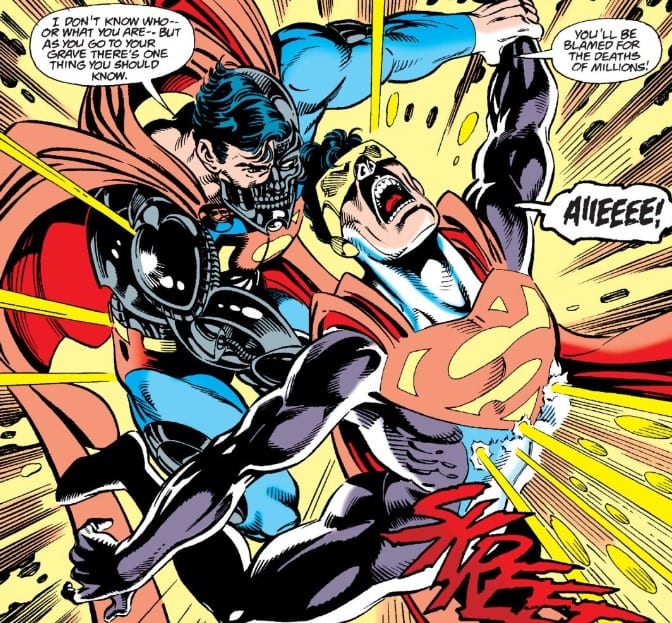
But the genuinely haunting moment of Eradicator’s timeline is in Superman: The Return, when he and Cyborg Superman investigate a dead spot in satellite imagery for the government. Cyborg Superman, with a two-way radio to the president, suddenly claims Eradicator has turned on him. When Eradicator turns around, confused, he’s shot by the Cyborg. As Cyborg Superman grabs him, and bombs planted all around Coast City begin to explode, he simply says to the Eradicator, “As you go to your grave, there’s one thing you should know. You’ll be blamed for the death of millions.”
It’s a small moment. But it reminds us that even the most celebrated stories can be twisted out of all recognition by the wrong hands.
Finding Their Gospel
The first couple volumes of Superman’s death and return series are alright. But their use of Biblical imagery seems to just be there, rather than adding to the story or interpretation. But when four Supermen come out of the blue, we see four people try and tell the story of who they think Superman is. Is he a king, a servant, a man, or a god?
It’s a story about how one man’s life had so much impact. One exploration into who he was wasn’t enough. And so the creative team behind this arc found their footing in Reign of the Supermen. Their nods to Scripture go from decorative to deeply thought-provoking. It suddenly becomes about a man who represented so much to people. The question is, who is Superman? The answer is given four times from four different perspectives. And with that, this creative team presents a set of gospels inspired by Superman.

